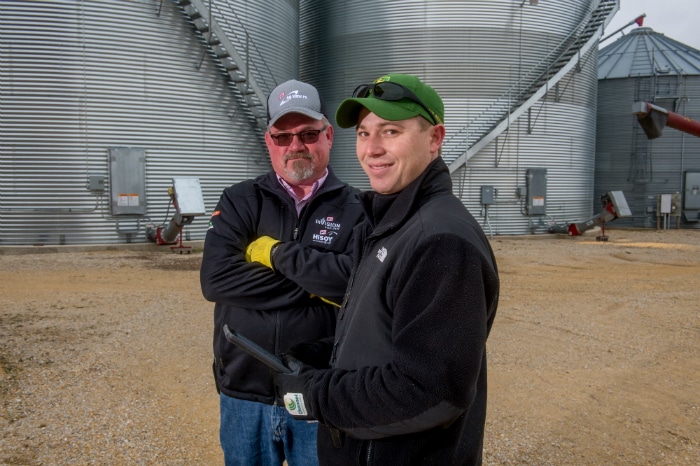The Ganschow family farms near Walnut, Illinois, and have been in business for more than 100 years. Its owners attribute its longevity to continually incorporating advanced management practices. Today, Michael Ganschow, in partnership with his mother, Deb and father, Jim, know that conservation practices and proven technology are key to preparing the 2,700-acre farm for future generations.
It’s always been this way. For example, the Ganschows incorporated no-till in the late 1970s. Today, they use strip-till in corn and no-till in soybeans to reduce soil erosion and build organic matter to improve soil health.
The Ganschows have implemented 4R strategies for more than 10 years. They use the data they collect to create prescriptions to accurately place nutrients. Every fertilizer application incorporates 2.5-acre grid soil sampling and analysis that is turned into maps and georeferenced with yield monitoring data to accurately forecast crop removal rates. Variable-rate technology delivers nitrogen, phosphorous, and potassium at the right rate and time and has resulted in $15/acre savings in corn. Variable-rate planting delivers the right amount of seeds to match soil quality. Cover crops help keep nutrients in place in the off-season.
Ganschow and his agronomist, Malcom Stambaugh with Ag View FS, also in Walnut, have worked together for 10 years. In addition to jointly developing 4R protocols for the farm, they are involved in a local nutrient stewardship group that organized a water testing protocol for farmers. Working with Illinois Farm Bureau and the Illinois Nutrient Loss Reduction Strategy, they work to increase farmer participation to improve conservation and natural resources. The group also raises awareness of key issues by engaging with the public.
Continued use of the 4Rs, technology, and prudent overall management will ensure the Ganschow family farm will be ready for the kids.
Best Practice Management
- 2.5-acre grid and soil sampling guides nutrient management plans.
- Soil analysis mapped and georeferenced with yield data to accurately replace crop removal rates.
- Starter fertilizer, sidedress, and split applications ensure nitrogen is delivered effectively.
- Majority of nitrogen is sidedressed once the crop is up.
- Nitrogen fertilizer is matched to variable planting rates.
- Majority of phosphorous (MicroEssentials and DAP) applied in fall. It and spring application are variable-rate dry broadcast.
- Cover crops help keep nutrients in place.
- Nearly all fields with rolling landscape have grassways.
- Grass terraces control water and erosion on sloping fields
- 50-acre buffer strips throughout the farm.
- 200,000 feet of drain tile removes of excess water.
- Bioreactor for tile drains has potential to reduce nitrogen losses in drainage by 25 percent.
